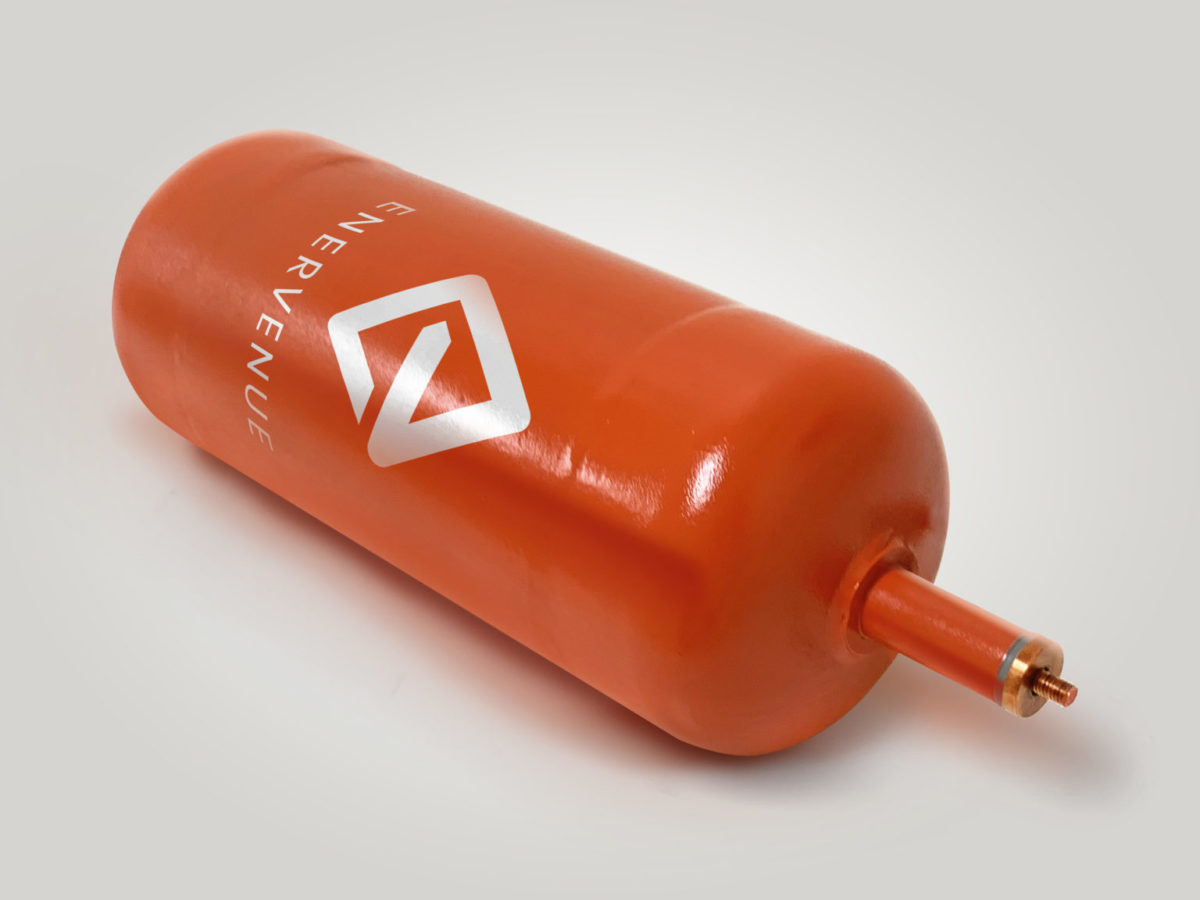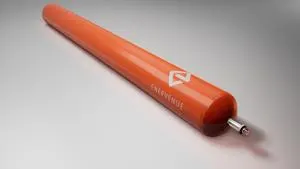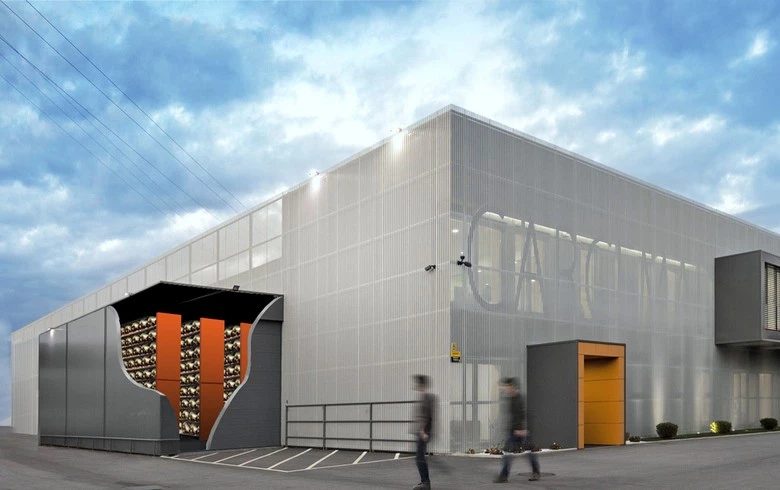
About Us
Green Energy Renewable Solutions is a manufacturer of Battery Energy Storage Systems (BESS) utilizing batteries from several different manufacturers. Our primary focus is providing BESS solutions to Renewable Energy sources. We combine our many years of manufacturing and power generation experience to provide custom solutions that fit each project’s requirements. We offer a range of BESS solutions including options for Nickel Hydrogen and Lithium-Ion battery chemistries. In addition, we offer both containerized options and solutions for projects installed indoors.
Our team is excited to hear from you! Contact us to discuss your project requirements.
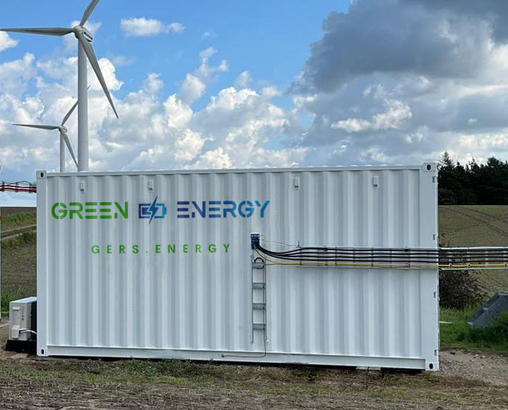
Our BESS Solutions
Green Energy Renewable Solutions employs world-class engineering and manufacturing processes to produce turnkey Battery Energy Storage Systems. Our team is keen on providing engineered solutions that utilize readily available components that will lessen current and future supply chain constraints.
 EnerVenue Nickel Hydrogen Batteries
EnerVenue Nickel Hydrogen Batteries
 CATL Lithium Iron Phosphate Batteries
CATL Lithium Iron Phosphate Batteries
EnerVenue Nickel Hydrogen Solutions
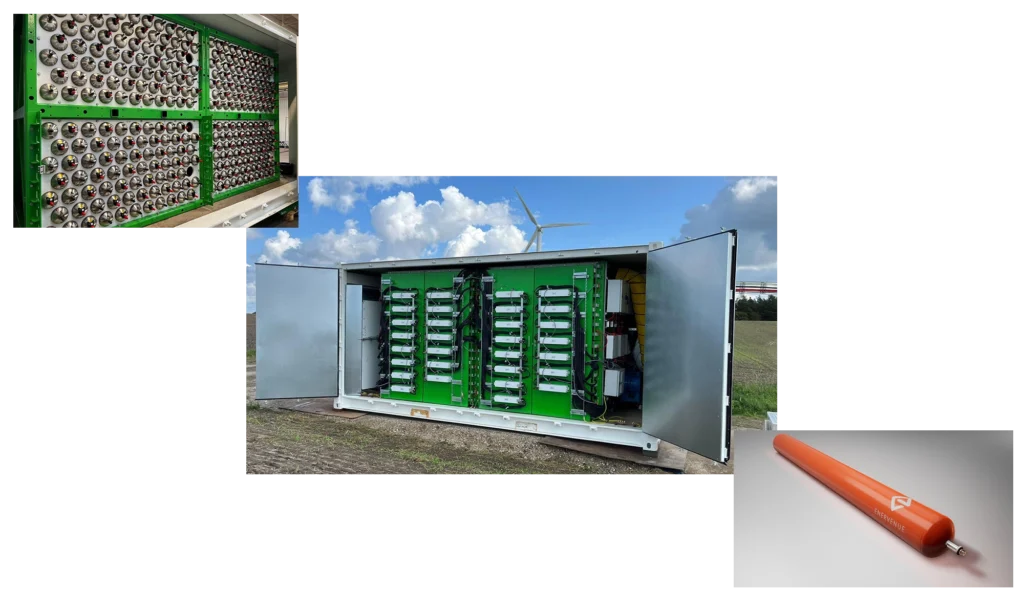 EnerVenue’s nickel-hydrogen (Ni-H2) battery is a type of rechargeable battery that uses nickel oxide hydroxide and hydrogen gas as the positive and negative electrodes, respectively. The battery operates by combining hydrogen gas with oxygen from the air to produce water, while releasing electrical energy. When the battery is being charged, this process is reversed, with water being electrolyzed back into hydrogen and oxygen, with the hydrogen being stored on the negative electrode until the battery is discharged again.
EnerVenue’s nickel-hydrogen (Ni-H2) battery is a type of rechargeable battery that uses nickel oxide hydroxide and hydrogen gas as the positive and negative electrodes, respectively. The battery operates by combining hydrogen gas with oxygen from the air to produce water, while releasing electrical energy. When the battery is being charged, this process is reversed, with water being electrolyzed back into hydrogen and oxygen, with the hydrogen being stored on the negative electrode until the battery is discharged again.
Below are some characteristics and features for the EnerVenue Ni-H2 battery:
- Non-Toxic Materials: Batteries do not contain flammable liquids or toxic materials. Use materials found readily available on any continent. Fully recyclable.
- Safety: Unlike Li-ion chemistries, EnerVenue Ni-H2 batteries exhibit no risk of thermal runaway or fire propagation. No costly/complex fire suppression system is needed. Completed UL9540A Testing.
- Durability: A battery that wants to be used! Designed for 30 year, 30,000 cycles, 3 cycles / day with second life usage remaining. Charge/Discharge rates ranging from C/2 to C10. No augmentation is needed to maintain performance throughout the life of the system.
- Efficiency: Peak 90% Round Trip Efficiency at 25oC. Expected capacity retention of 86% after 30,000 cycles.
CATL LiFePO4 Solutions
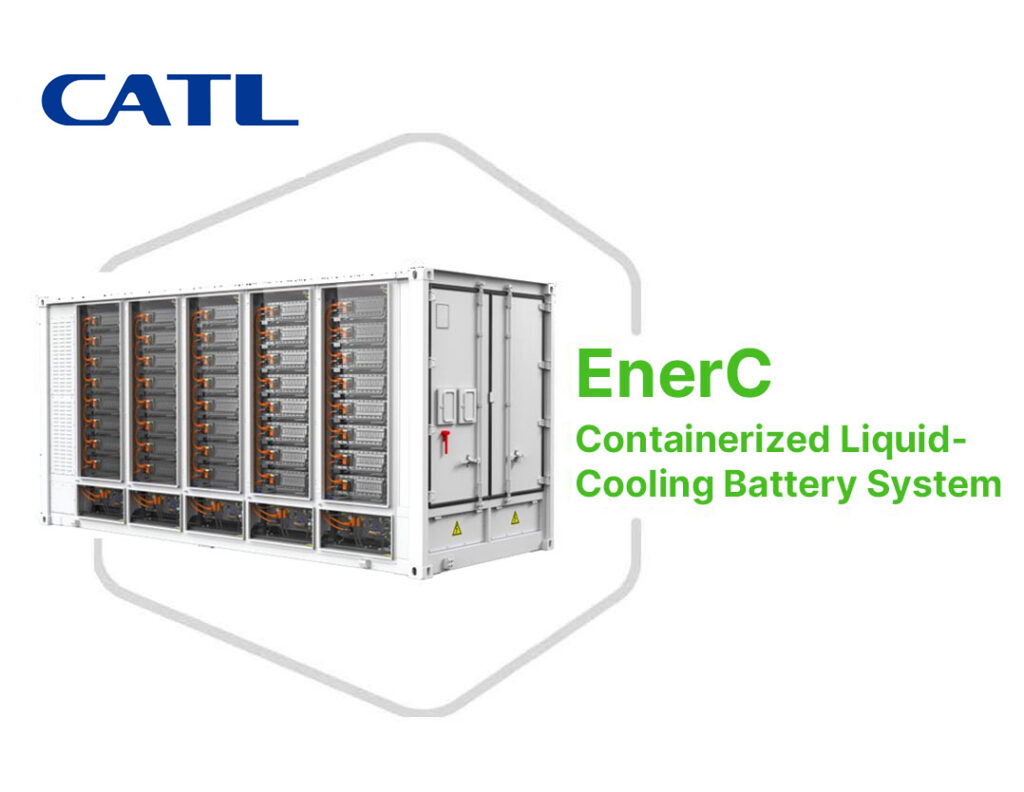 CATL is a global leader in battery manufacturing. Their LiFePO4 battery, which stands for Lithium Iron Phosphate battery, is a type of rechargeable lithium-ion battery. It is known for its unique chemistry and has gained popularity in various applications due to its specific advantages. LiFePO4 batteries are used in a variety of applications, including electric vehicles (EVs), solar energy storage systems, backup power systems, portable electronic devices, and more. Their specific characteristics make them well-suited for situations where safety, longevity, and performance are critical factors.
Below are some key characteristics and features of LiFePO4 batteries:
CATL is a global leader in battery manufacturing. Their LiFePO4 battery, which stands for Lithium Iron Phosphate battery, is a type of rechargeable lithium-ion battery. It is known for its unique chemistry and has gained popularity in various applications due to its specific advantages. LiFePO4 batteries are used in a variety of applications, including electric vehicles (EVs), solar energy storage systems, backup power systems, portable electronic devices, and more. Their specific characteristics make them well-suited for situations where safety, longevity, and performance are critical factors.
Below are some key characteristics and features of LiFePO4 batteries:
- Chemistry: LiFePO4 batteries use lithium iron phosphate as the cathode material, which is different from the more common lithium cobalt oxide (LiCoO2) used in traditional lithium-ion batteries. This difference in cathode material results in distinct performance characteristics.
- Safety: LiFePO4 batteries are considered safer than some other lithium-ion battery types, especially when it comes to thermal stability. They are less prone to thermal runaway, which can reduce the risk of fires or explosions, making them suitable for applications where safety is a primary concern.
- Long Cycle Life: LiFePO4 batteries typically have a longer cycle life compared to other lithium-ion batteries. They can withstand a greater number of charge and discharge cycles before their capacity significantly degrades. This makes them a good choice for applications that require frequent cycling, such as solar energy storage or electric vehicles.
- Stable Voltage: LiFePO4 batteries maintain a relatively stable voltage throughout their discharge cycle, which can be an advantage in applications that require a consistent power supply. This voltage stability also helps extend the lifespan of connected devices.
- High Discharge Rate: LiFePO4 batteries are capable of providing high discharge currents, making them suitable for applications that require rapid power delivery, such as power tools and electric vehicles.
- Low Self-Discharge: These batteries have a lower self-discharge rate compared to some other battery types. This means they can hold their charge for longer periods when not in use.
- Environmental Friendliness: LiFePO4 batteries are considered more environmentally friendly than some other lithium-ion batteries because they contain non-toxic materials and are less prone to thermal runaway, reducing the risk of hazardous incidents during manufacturing, use, or disposal.
Latest News
EnerVenue secures 250 MWh order for nickel-hydrogen batteries
EnerVenue has agreed to supply batteries to Green Energy Renewable Solutions for use in customized building blocks for maritime applications, construction sites, and other heavy in
EnerVenue Launches Energy Storage Vessels (ESVs), the Second-Generation of its Metal-Hydrogen Energy Storage Solution
FREMONT, Calif., Dec. 06, 2022 (GLOBE NEWSWIRE) — EnerVenue, the first company to bring metal-hydrogen batteries capable of more than 30,000 cycles to the clean energy r
EnerVenue inks master supply deal for 250 MWh of metal-hydrogen batteries
EnerVenue, a US company developing metal-hydrogen batteries, last week unveiled a master supply agreement to provide 250 MWh of its technology over the next three years to Green En
Metal-hydrogen battery company EnerVenue signs 250MWh supply deal with developer
Metal-hydrogen battery startup EnerVenue has signed a master supply agreement (MSA) with Green Energy Renewable Solutions for 250MWh of its technology over the next three years. Th

